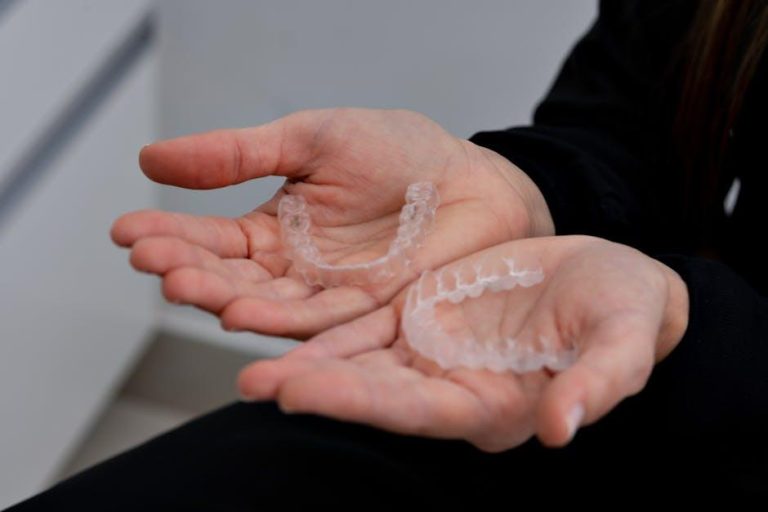
Mastering Patient Communication for Invisalign Success – Dentistry UK
Invisalign has revolutionised the orthodontic landscape, offering patients a discreet and comfortable alternative to traditional braces. However, achieving optimal results with Invisalign depends not only on the technology or treatment plan but also heavily on effective patient communication. In the UK’s competitive dentistry market, mastering communication skills with your Invisalign patients can enhance treatment success, increase patient satisfaction, and improve practice reputation.
Why Patient Communication Matters for Invisalign Success
Good communication is essential for setting realistic expectations, encouraging compliance, and ensuring patients fully understand their Invisalign journey. Since Invisalign aligners require diligent wear — typically 20-22 hours per day — patients need constant motivation and clear guidance.
Strong communication builds trust and rapport, reduces treatment uncertainties, and allows dentists and orthodontists to address concerns proactively. Furthermore, well-informed patients are more likely to comply with treatment recommendations, follow dietary guidelines, and attend scheduled check-ups, all of which contribute to successful outcomes.
Benefits of Effective Communication in Invisalign Treatment
- Improved Compliance: Clear instructions empower patients to wear their aligners correctly and consistently.
- Reduced Anxiety: Open dialogue alleviates fears or misconceptions about Invisalign.
- Higher Satisfaction Rates: Patients who feel heard and informed generally have more positive treatment experiences.
- Fewer Treatment Delays: Early communication of issues can prevent complications or extended treatment times.
- Enhanced Practice Reputation: Positive patient experiences lead to referrals and repeat business.
Essential Patient Communication Strategies for Dentistry UK Practices
1. Initial Consultation and Assessment
Start with a thorough consultation that explores patients’ motivations, lifestyle, and concerns about Invisalign. Use clear, jargon-free language to explain how Invisalign works, its advantages, potential limitations, and expected treatment duration. Employ visual aids like 3D simulations or before-and-after photos to make explanations tangible.
2. Setting Realistic Expectations
Clarify that Invisalign success depends on patient cooperation, including consistent aligner wear and oral hygiene maintenance. Being upfront about possible discomfort periods, such as when switching aligners, empowers patients to anticipate and manage these moments without unnecessary worry.
3. Regular Progress Updates
Maintain ongoing communication through scheduled appointments, phone calls, or secure messaging platforms. Discuss progress, celebrate milestones, and address any issues such as fit problems or attachment loosening. Digital apps linked to Invisalign can help both clinicians and patients track treatment phases effectively.
4. Tailored Educational Resources
Provide customised written materials, videos, or FAQs specific to Invisalign care. These resources reinforce verbal instructions and act as handy references for patients at home.
5. Encouraging Patient Feedback
Create an environment where patients feel comfortable sharing their experiences or challenges. Patient feedback can identify potential barriers to compliance early and foster continuous communication improvements within your practice.
Practical Tips to Enhance Invisalign Patient Communication
- Use Empathetic Language: Validate patient concerns to build trust and openness.
- Leverage Technology: Utilise messaging apps, email reminders, or patient portals for quick, convenient communication.
- Train Your Team: Ensure all staff — from receptionists to hygienists — understand Invisalign basics and communication protocols.
- Personalise Communication: Adapt your communication style to the patient’s age, personality, and communication preference.
- Visual Communication: Employ diagrams, videos, and models frequently during consultations.
- Follow-Up System: Implement a structured recall system to keep patients engaged throughout treatment.
Case Study: Successful Communication Leads to Patient Satisfaction
Patient Profile: Emma, aged 28, sought Invisalign to correct mild crowding but was anxious about wearing aligners at work.
Communication Approach: Her dentist used 3D scans to visualise Emma’s teeth movement and provided a detailed timeline. They encouraged Emma to voice concerns and sent weekly check-in messages via a secure app.
Outcome: Emma adhered strictly to the treatment plan, felt supported throughout, and completed her Invisalign journey in 14 months with excellent alignment and no missed appointments.
WordPress Styled Table: Invisalign Patient Communication Checklist
| Communication Task | Description | Frequency |
|---|---|---|
| Initial Treatment Overview | Explain benefits, process, and expectations clearly | Once, at consultation |
| Provide Educational Materials | Offer brochures, FAQs, and video links tailored to Invisalign | At consultation and aligner delivery |
| Progress Check-Ins | Discuss treatment progress and address concerns | Every 4-6 weeks |
| Motivational Reminders | Send messages encouraging aligner wear compliance | Weekly or bi-weekly |
| Post-Treatment Feedback | Gather patient experience and satisfaction data | At treatment completion |
Conclusion: Enhancing Invisalign Success Through Patient Communication
Mastering patient communication is a cornerstone of Invisalign success in UK dental practices. By clearly informing, motivating, and supporting patients throughout their orthodontic journey, dental professionals can significantly improve compliance, reduce anxiety, and deliver outstanding treatment results. Combining empathy with technology and practical communication strategies fosters a positive patient experience that benefits both patients and practitioners alike.
Invest in honing your communication skills, embrace patient-centred care, and watch your Invisalign success stories multiply.


